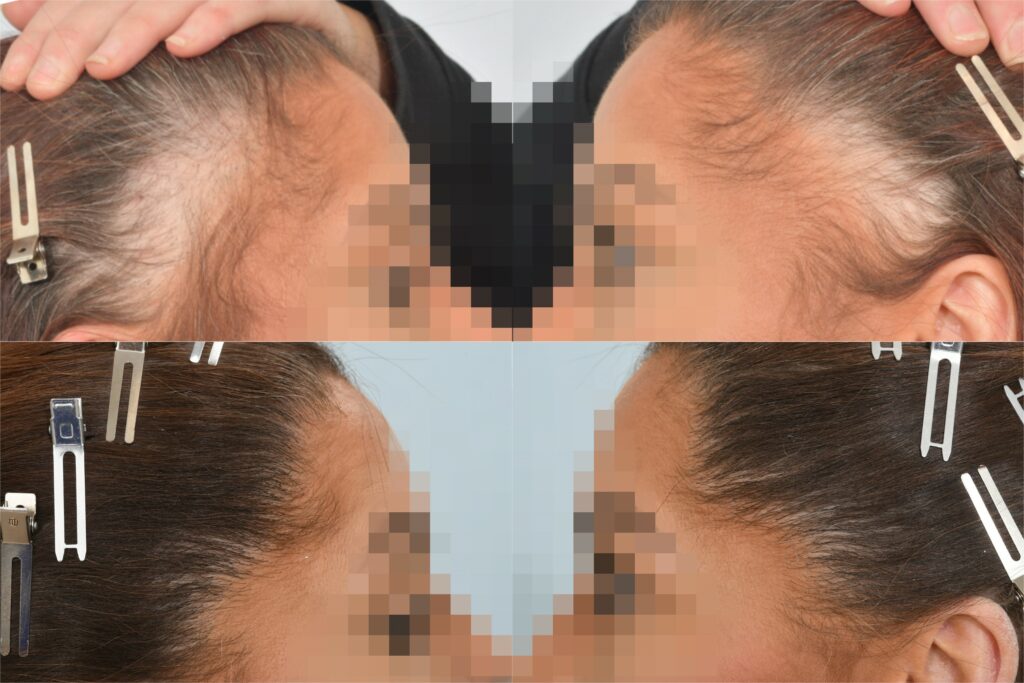Traction alopecia is a form of hair loss caused by prolonged tension on the hair follicles. This type of hair loss is most commonly seen in those who wear tight hairstyles such as braids, weaves, extensions, tight ponytails or other tightly worn hair accessories.
Traction Alopecia Symptoms
Traction alopecia can cause hair to thin or fall out in the affected areas. The hair loss is often most pronounced around the hairline, temples, and behind the ears, but can occur anywhere on the scalp. Traction alopecia can also cause the hair follicles to become damaged over time, which can result in permanent hair loss if left untreated.
How to Prevent Traction Alopecia
The best way to prevent traction alopecia is to avoid hairstyles that put too much tension on the hair. If you must wear your hair in a tight style, try to limit the amount of time that you wear it and give your hair a break in between styles.
Traction Alopecia Treatment Options
If you are already experiencing traction alopecia, the good news is that there are treatments available. In some cases, the hair may grow back on its own if the tension on the hair is reduced. However, if the hair loss is more severe or the hair follicles have been damaged, hair transplant surgery may be recommended.
During a hair transplant procedure, healthy hair follicles are extracted from the donor area (usually the back or sides of the scalp) and transplanted into the bald or thinning area. This can be done using the FUE (follicular unit extraction) or FUT (follicular unit transplantation) techniques, depending on the patient’s needs and preferences. The transplanted hair should then continue to grow in the new location, providing a permanent solution for hair loss as a result of traction alopecia.
The success of the procedure will depend on several factors, including the extent of the hair loss and the quality and quantity of the donor hair. Often patients presenting with traction alopecia are not suffering from an underlying hair loss condition such as male or female pattern baldness. In such cases, the patient should get a superb result as the transplanted healthy donor hair grows extremely well in the area of thinning.
Treatment Before & After
The image below shows a patient who had been suffering from traction alopecia. As can be seen the hair had been damaged due to the tension and left an area of baldness behind both ears. Hair was transplanted from the back and sides of the patients scalp into the area of hair loss and the image below shows the excellent results.

If you are concerned about hair loss, speak to the team at HRBR on 00353 1 209 1000 or email us at info@hrbr.co.uk

